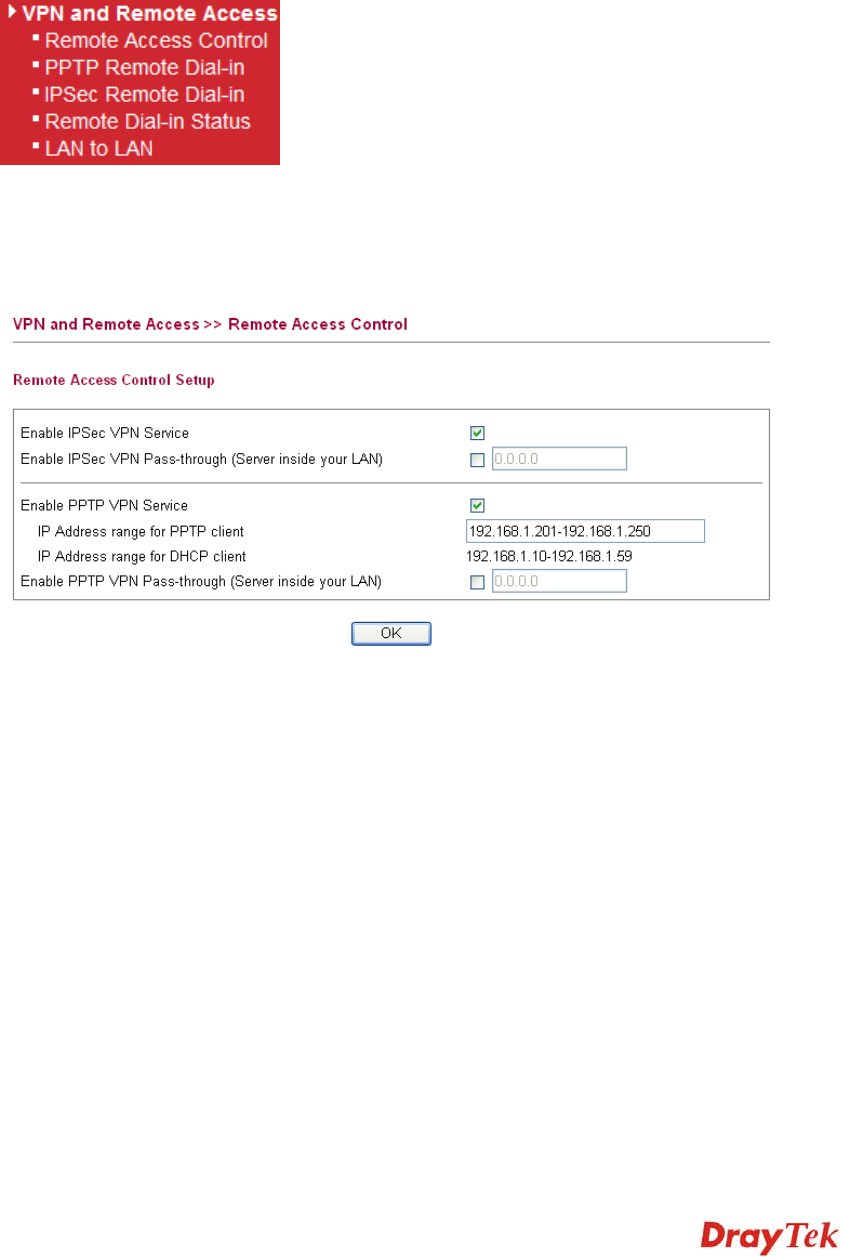
Vigor2750 Series User’s Guide
181
4
4
.
.
8
8
V
V
P
P
N
N
a
a
n
n
d
d
R
R
e
e
m
m
o
o
t
t
e
e
A
A
c
c
c
c
e
e
s
s
s
s
A Virtual Private Network (VPN) is the extension of a private network that encompasses links
across shared or public networks like the Internet. In short, by VPN technology, you can send
data between two computers across a shared or public network in a manner that emulates the
properties of a point-to-point private link.
Below shows the menu items for VPN and Remote Access.
4
4
.
.
8
8
.
.
1
1
R
R
e
e
m
m
o
o
t
t
e
e
A
A
c
c
c
c
e
e
s
s
s
s
C
C
o
o
n
n
t
t
r
r
o
o
l
l
Enable the necessary VPN service as you need. If you intend to run a VPN server inside your
LAN, you should enable IPSec VPN Pass-through and specify an IP address to allow VPN
tunnel pass through.
Enable IPSec VPN Service
If this checkbox is checked, the system firewall will allow
VPN (IPSec) remote access from WAN side to the router.
Enable IPSec VPN
Pass-through (Server inside
your LAN)
If this checkbox is checked, the system firewall will allow
VPN (IPSec) remote access from WAN side to a VPN
device on the LAN. Type the IP address of the VPN
device in the field next to the checkbox.
Enable PPTP VPN Service
If this checkbox is checked, the system firewall will allow
VPN (PPTP) remote access from WAN side to the router.
IP Address range for PPTP client – Specify an IP
address pool for the local private network that will be
assigned to PPTP clients. Note the values given here
should not be the same as IP address range for DHCP
Client.
IP Address range for DHCP client – Display the range
of IP address assigned by DHCP server.
Enable PPTP VPN
Pass-through (Server inside
If this checkbox is checked, the system firewall will pass
VPN (PPTP) remote access from WAN side to a VPN


















